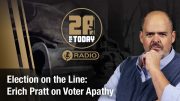
The tragic shooting at Sandy Hook Elementary School in Newtown, Connecticut on December 14 has proven to be a reference point for opponents of the Second Amendment to propose anti-gun legislation once again. However, reports from the Federal Bureau of Investigation indicate that the focus on semi-automatic rifles is misguided. In fact, according to the FBI, more hammers, clubs, and other blunt objects are involved in murders than rifles or shotguns.
In 2011, 323 murders were committed with a rifle and 356 with a shotgun, while a staggering 496 were committed with hammers and clubs.
Furthermore, from 2005 to 2011, more people in the United States were killed with blunt objects such as hammers and clubs, or with hands and fists, than with rifles. In many of those years, twice as many people were killed with hands and fists than with rifles.
In 2006, there were 618 murders committed with a hammer or club, while 438 murders were committed with a rifle. In 2005, 445 murders were committed with a rifle while 605 by hammers and clubs.
Also in 2011, 1,694 people were killed by “knives or cutting instruments,” far more than rifles and shotguns combined.
The FBI does add, however, that the “murder by rifle” statistic could be increased slightly because non-categorized types of guns are not taken into account. However, the overall data still show that a significant number of people are being killed by hammers, clubs, and knives — and that those instances of murder continue to go up each year.
What makes these findings so interesting is that rifles have been a target of some members of Congress, most notably Senator Dianne Feistein, who have proposed banning the AR-15, a semiautomatic rifle, the same that was reportedly used by Adam Lanza in the shooting at Sandy Hook Elementary School.
CBSDC reports, “The law currently proposed by Senator Feinstein would strengthen the expired 1994 ‘Assault Weapons’ ban, outlaw certain rifles and handguns, and restrict ‘high capactiy’ magazines, in addition to compulsory gun registration under the National Firearms Act.”
Feinstein has never been one to disguise her disdain for the Second Amendment.
“If I could have gotten 51 votes in the Senate of the United States for an outright ban, picking up every one of them, Mr. and Mrs. America turn them all in, I would have done it. I could not do that. The votes weren’t here,” Feinstein told MRC-TV in a 1995 interview.
But the FBI reports have prompted some to inquire about the feverish targeting of rifles. Second Amendment analyst and investigative journalist Mike Vanderboegh, pointing to the report, wonders why rifles continue to be the constant focus of new regulation proposals when they are clearly used in a relatively small number of murders, particularly when handguns are by far the most common type of firearm used in murders, with over 6,000 handgun murders in 2011, according to the FBI.
“Why do they want to ban them? Because they are afraid of them? Why are they afraid?” Vanderboegh asked.
“I think it’s because many in our government fear that those weapons might one day get turned on them when their demands become too tyrannical,” Vanderboegh said.
In a clear effort to intimidate gun owners, the Journal News published the names of people who have been issued gun permits in the New York Counties of Westchester and Rockland, and included an interactive map with the gun owners’ addresses.
And members of Congress who had been previously considered to be gun-friendly are now calling for tougher gun laws.
Democratic Sen. Mark Warner of Virginia, who often boasts of his “A” rating from the NRA, has called the Connecticut shooting a “game changer” and suggested new gun laws.
“I believe every American has Second Amendment rights, the ability to hunt is part of our culture,” he told a CBS affiliate.” I’ve had a NRA (National Rifle Association) rating of an “A” but, you know, enough is enough,” Sen. Warner said. “I think most of us, realize that there are ways to get to rational gun control. There are ways to grapple with the obvious challenges of mental illness.”
Similarly, Senator Joe Manchin of West Virginia, who has long been considered a pro-gun, pro-NRA Democrat, said in the wake of the Newtown massacre that it is time to reconsider gun control. On Twitter, he voiced support for Senator Joe Lieberman’s proposal to create a national commission on gun violence and wrote, “This awful massacre has changed where we go from here. Our conversation should move beyond dialogue.”
For some analysts, however, the Sandy Hook shooting has compelled them to focus their attention on the use of behavior-modifying drugs rather than on gun control.
Front Sight Firearms Training Center president Ignatius Piazza states, “Prior to the introduction of psychiatric drugs being given to children and adults, we did not have these homicidal and suicidal mass shootings, even though guns were readily available and unrestricted.”
According to Piazza, if any ban were to be proposed following the tragedy at Sandy Hook, it should be of psychiatric drugs.
“Over time, as our youth are no longer begin drugged into becoming sociopaths, we will return to the days when these type of horrific, murderous rampages never happened,” Piazza said.
Any other proposed solution, he said, “is just a smoke screen that gets in the way of seeing the right target to end these homicidal and suicidal mass shootings.”
Despite the abundance of psychiatric drugs involved in cases of mass shootings, or evidence that hammers, clubs, and knives are used in far more homicides than shotguns or rifles, both the media and members of Congress continue to target the Second Amendment.
Ironically, however, while a number of anti-gun advocates have used the Sandy Hook shooting to propose restrictions on gun ownership, the FBI reports that in the month of December, there were a record number of FBI background checks for Americans buying guns.
Reuters reports that the FBI recorded nearly three million background checks in that month alone, surpassing the record set in November of 2.01 million checks, a rise of approximately 39 percent. In December, that figure jumped to 49 percent from December 2011, when the FBI had recorded 1.86 million checks.




